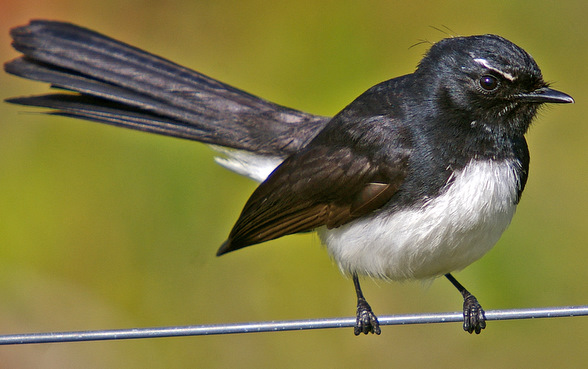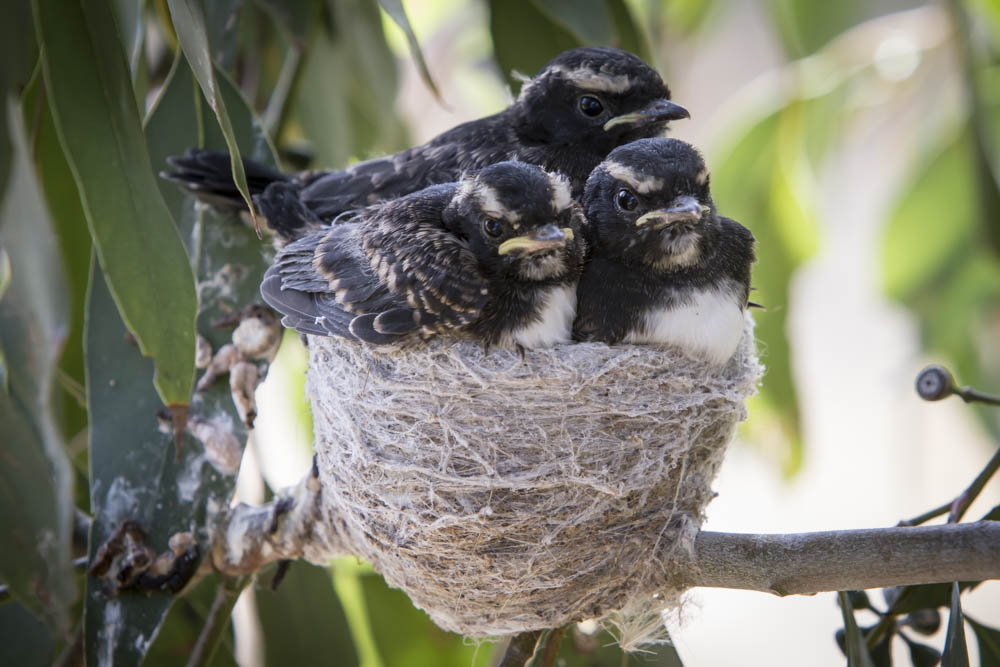Behaviour
Call
Whistled notes which can be interpreted as "sweet-pretty-creature"; also harsh chattering.
Diet
Small insects and animals that live on, or just under, the surface of the ground, including grasshoppers, scarab beetles, insect larvae, frogs and small lizards. During the day it walks along jabbing its beak into the ground, searching for food.
Movement
Agile and twisting. It is usually seen alone or in pairs, although in winter it may join a flock, often with other species.
Breeding
It's nest is a neat cup of grasses covered with spider's web on the outside and lined with soft grasses, hair and fur. Three cream eggs, speckled with grey and brown, are incubated for 14 days by both parents. The young birds spend about 14 days in the nest then are driven away when the next clutch starts to hatch. In favourable conditions there may be four successive clutches in a season.
Field Guide
Improve your identification skills. Download your Willie wagtail field guide here!





